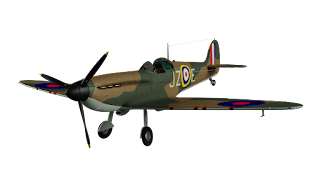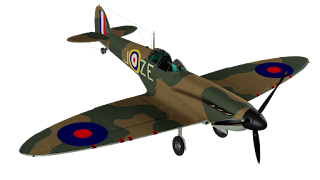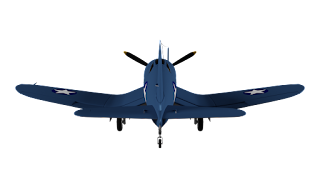Civil service exam and new updates for: Spitfire, IAR 80, F4U, Yak-1 and new projects - December 7th, 2023
Hello everyone. It's me Antony, back with another blog in 2023. We are now on December 7th - approaching the end of 2023. Now that I'm working and my 7th semester is near conclusion, my time for Blogs decreased to some occasions. At least it is good to be back at work.
I performed the civil service exams on December 3rd. One for the bookkeeper / clerk vacancy and one for community health agent. The preliminary results arrived on Monday (December 4th) in order to have some idea of my score after the two exams.
Sadly, I didn't passed on the exam for the bookkeeper / clerk - with my score around 42 points and I needed 50. But on the other hand, for the community health agent, I managed to score 83 points, which is great. Now I need to wait for the official results. I guess the classification will come after the exam scheduled on December 17. Also, I have to perform the attendant / receptionist exam on December 10.
As always, I'll have to lay low with Blender and my personal stuff in order to dedicate myself to the exams. And again, Warframe brought a new Nightwave chapter, which will be a pain in my butt. For the time being, I'm going to take a break from Warframe to focus on exams. My brother and I can perform the previous challenges from the lastest weeks without any trouble like when it was first introduced to the game to replace the Alert missions.
Still, let's go for the important. For today, I'm going to share you the new rendered images of the British Spitfire (both the Mk I and Mk IX), the Romanian IAR 80, the American F4U-1A Corsair, the Soviet Yakovlev Yak-1 and two new projects.
Question: More new projects?
Answer: Yes. More new projects while I have countless projects to finish. I'll talk about them later.
Supermarine Spitfire Mk I and Mk IX:
Amazing, huh? Now the Spitfire has the Bump / Displacement texture for the metal spacing lines and projections from the fabric structure. I had to create two different textures for these two models since a considerable number of components has been reused, like the fuselage, the wings, the flight control components and the landing gear.
I plan to reuse the original model and texture from the Mk I for the Mk V, while importing the Hispano cannons from the Mk IX. After the Spitfire, I'll conclude the Hurricane's Bump texture.
The Romanian IAR 80 received some minor adjustments on the wings as I planned to make the fairings. I had to rely on photos and again on War Thunder since the IAR 80 (precisely the IAR 81 - armed with two Mauser cannons) is available on the game as an Italian Premium plane, limited only in flight test unless I buy it with Golden Eagle (the money you invest on the game). Although I stopped playing IL-2 Sturmovik for a while, the IAR 80 is being developed to the game as an Axis air fighter.
Back to the project, the fairings were a little tricky to make since there are some pieces that warp in land mode. The external ones - located next to the root of the undercarriage. Minor changes includes: the ailerons, the Romanian Air Force roundels and the fuselage to fit with the spacing from the wings.
The Corsair received some adjustments on its tail landing gear and the spacing for it during take-off. Honestly it was a little tricky to make without the photos and revisiting it on War Thunder.
After the last modifications on the landing gear and fuselage, I made some changes on the wings, ailerons and flaps. Now it can bent like in the original aircraft. There are some pieces I didn't made for the Corsair's wings during the landing mode with the tips recovered, yet I tried my best to make it as close as possible. At least this American naval air fighter is looking good. Also I imported the components from the P-47's cockpit to the Corsair.
Yakovlev Yak-1:
Same thing I did from the IAR 80 to the Soviet Yak-1. I tried my best to extract a piece from the wings to make the fairings and the ailerons. Although there are some things from those pieces that I missed, I plan to adjust it and the wings.
After that, I'll make a nice texture for this Soviet aircraft and add the cockpit components.
Now, the new projects. The first new project I started is the German Horten Ho 229. As always, I like to share the story of planes, vehicles, ships, weapons and more.
The Horten Ho 229, often known as the Horten H.IX or Gotha Go 229, is a German prototype fighter / bomber initially designed by Reimar and Walter Horten to be built by Gothaer Waggonfabrik. Developed at a late stage of the Second World War, it was the first flying wing to be powered by jet engines. After the First World War, Germany was limited to build planes only for civilian purposes like mail deliveries and passenger transport. In the early 30s, the Horten Brothers started their business with their gliders consisting of a flying wing design. The flying wing layout removed the need for a tail and associated control surfaces and theoretically offered the lowest possible weight, using wings that were relatively short and sturdy, and without the added drag of the fuselage. Their flying gliders became an attraction in Germany, although military authorities did not see any interest in their projects nor requiring their services. In 1943, Reichsmarschall Hermann Göring issued a request for design proposals to produce a bomber that was capable of carrying a 1,000 kilograms (2,200 lb) load over 1,000 kilometers (620 mi) at 1,000 kilometers per hour (620 mph); the so-called “3×1000 project”. Conventional German bombers were capable of reaching Allied targets across Great Britain, but were suffering devastating losses from Allied fighters in the process. At the time, there were no conventional means for aircraft designers to meet these goals. The new Junkers Jumo 004B turbojets could provide the required speed, but had excessive fuel consumption. To answer that, the Horten brothers concluded that the low-drag flying wing design could meet all of the goals: by reducing the drag, cruise power could be lowered to the point where the range requirement could be met. They put forward their private project, the H.IX, as the basis for the bomber. Göring quickly approved the Horten proposal, but ordered the addition of two 30 mm cannons, as he felt the aircraft would also be useful as a fighter due to its estimated top speed being significantly higher than that of any Allied aircraft. German officials assigned the designation Ho 229 to the aircraft. Göring was reportedly impressed with the design and personally intervened to ensure that three prototypes were ordered at a cost of 500,000 Reichsmarks. The H.IX was of mixed construction; the center pod made of welded steel tubing while the wings were made of several plywood panels glued together with a mixture of charcoal and sawdust; and the spars were made of pine. The external structure was covered by a fireproof paint. The prototype would receive a pair of BMW 003 turbojet engines, but delays forced the adoption of the Junkers Jumo 004 and an order for 100 units, but was subsequently curtailed to only 20 aircraft. The V1 flew for the first time on 1st of March 1944. Flight results were very favorable, but there was an accident when the pilot attempted to land without first retracting an instrument-carrying pole extending from the aircraft. Then the V2 was made, having its maiden flight on 2 February 1945 with Leutnant Erwin Ziller as the test pilot. Unfortunately, after one of the engines caught fire, Ziller died from his injuries on February 18 1945 during another test flight with the V2. As the Americans approached Germany during the final stages of the war, the third prototype of the Ho 229 was built and put into development before being captured by the U.S. Third Army in April 1945 and shipped to the United States for evaluation. Walther and Reimar Horten were taken into custody and interrogated for any information surrounding the Ho 229. After WW2, Reimar emigrated to Argentina where he built gliders, including an experimental supersonic delta-wing aircraft to transport oranges from producers to Buenos Aires: the FMA I.Ae 38 Naranjero; until he passed away in 1994. Walther remained in Germany and became an officer in the post-war German Air Force, passing away in 1998. The Ho 229 V3 parts (the airframe, landing gear, the central pod with the engines and the wings) remain in exhibition at the Smithsonian National Air and Space Museum (NASM). Interesting fact about the Ho 229: Although it is surrounded by myths about being the precursor of the stealth technology used by the Lockheed F-117 Nighthawk and the Northrop Grumman B-2 Spirit, a team of engineers from Northrop Grumman in partnership with National Geographic built a full-size non-flying reproduction of the V3, primarily made out of wood and used the same British radar devices from 1940 to 1945 for evaluation. Simulations showed a hypothetical Ho 229, with the radar characteristics of the mockup, which had neither metal frame nor engines, approaching the English coast from France flying at 885 km/h (550 mph) at 15–30 m (49–98 ft) above the water would have been visible to CH radar at a distance of 80% that of a Bf 109.
Here are the first renders of the Horten Ho 229:
The second new project I started is the German Junkers Ju 88. It was one of the German medium bombers designed for the Luftwaffe during WW2, capable of performing different missions beyond its original role - from bomber to dive bomber, torpedo bomber, recon-aircraft, heavy fighter, night fighter and ground-attack aircraft. The development of the Ju 88 started in June 1936 as part of a series of requirements formulated by the RLM for an unarmed, three-seat, high-speed bomber with a payload of 800–1,000 kg (1,800–2,200 lb). The team was formed by Ernst Zindel, Wilhelm Heinrich Evers and Alfred Gassner at the Junkers. The first prototype flight maiden occurred on December 21, 1936, reaching a speed of 580 km/h (360 mph). This achievement led Hermann Göring, head of the Luftwaffe, to an enthusiastic feeling - finally seeing the Ju 88 the perfect platform for the Schnellbomber (fast-bomber) program. In 1937, the aircraft underwent a program of reworks to take the role of dive bombers - proposed by Ernst Udet. For example: the fuselage had to be elongated, the dive flaps were installed and a review was made on the wings and flight controls. Despite these changes, the plane suffered delays to be deployed in combat - only entering service in 1939. The bomber variants were equipped with two 7.92 mm MG 81J at the rear of the fuselage, one in the forward section of the canopy, one in the ventral gondola and one in the lower section of the fuselage. The heavy fighter variants had its nose glazing replaced with a smoothly curved all-metal nose to receive several machine guns or cannons. The ground-attack variants had a 75 mm PaK 40 cannon installed on the gondola - similar to the Henschel Hs 129 and Messerschmitt Me 410 planes. During the initial days of WW2, the Ju 88 saw action in Norway and France where in the last country proved a valuable plane for the Luftwaffe, destroying enemy planes while grounded, railroads and ground targets. On 17 June 1940, the Ju 88 sank the British RMS Lancastria that transported British and French personnel off Saint-Nazaire, taking the lives of some 5,800 Allied personnel. During the Battle of Britain, the Junkers Ju 88 suffered its highest losses due to a series of misguided tactics from the German High Command, accidents and the lack of proper support from the fighters to fend off the RAF planes. This made the Ju 88 to withdraw from combat and join the upcoming main force of bombers to invade the Soviet Union. On the Eastern Front, the Balkans, the Mediterranean and the North African theater, the Junkers Ju 88 were responsible for taking down enemy grounded aircraft, tank and vehicle convoys, bases and ships. As the war escalated in favor of the Allies, some Ju 88 had to be designated as heavy fighters and night fighters to defend Germany from day and night bombers to supplement the need for more heavy fighters like the Bf 110 and Me 410. From 1941 to 1943, a newer version of the Ju 88 was built - under the designation Ju 188. Aside from Germany, Axis countries like Italy, Romania, Hungary and Finland also operated the Ju 88 while France, Great Britain and the Soviet Union used some captured units for evaluation.
The first images of the Junkers Ju 88 are here. I selected the A-4 model but I'll include the C-6 model as well.
Pretty nice, huh? I hope you like it.
Well, that's it for now my friends. I hope you like this Blog. I don't have updates from my original works to share you. In case I have some spare time to enjoy, I'll be working on other things aside from Blender projects and my personal things. Until the time comes, you will be surprised to see them. See you next time.
My DeviantArt:
My second Youtube channel:
My other Blogspot places:
My Facebook page:
My Instagram:
My ArtStation:
My Pixiv:
Note: Don't you dare to download these images and re-share it without my permission. If you do, please, leave the original author name.

























































Comments
Post a Comment